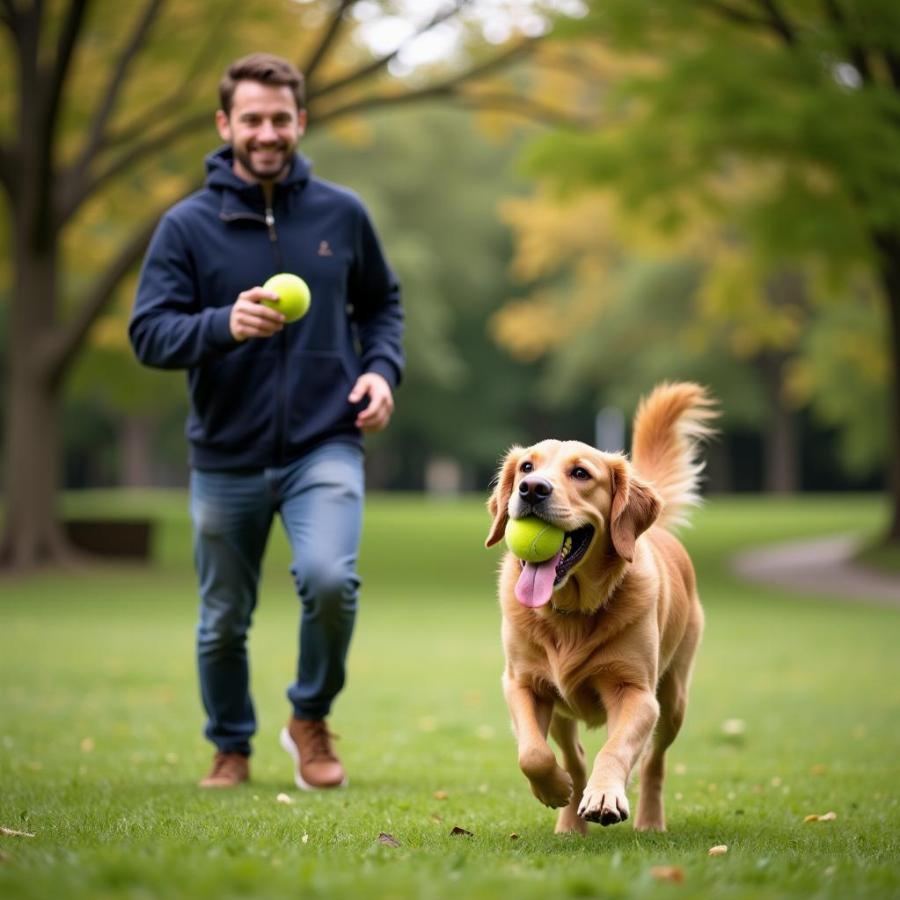Is your furry friend a frequent face-pawer? While it might seem like a strange behavior, dogs paw at your face for a variety of reasons, most of which are rooted in their natural instincts and communication style. Deciphering what your dog is trying to tell you can strengthen your bond and help you meet their needs better.
Communication Is Key: Why Dogs Paw
Dogs primarily communicate through body language, and pawing is just one tool in their communication arsenal. Unlike humans who rely heavily on verbal communication, dogs use a combination of vocalizations, facial expressions, and of course, body language to get their message across. Pawing, in particular, can convey a range of emotions and needs, from playful excitement to a request for attention.
Decoding the Paw: Common Reasons for Face Pawing
Understanding the context of your dog’s pawing is crucial to figuring out their message. Here are some common scenarios and their possible interpretations:
- Attention-Seeking: One of the most common reasons for face pawing is simply to get your attention. If your dog paws at you while you’re busy working, reading, or watching TV, they might be feeling a bit neglected and craving some quality time with their favorite human.
- Playtime Please! A gentle paw to the face, often accompanied by playful bowing, can be a clear invitation to play. Your dog might bring you their favorite toy or wag their tail excitedly, indicating their desire for a fun interaction.
- “I’m Hungry!” Just like pawing at you for attention, dogs might also paw at your face to remind you that their food bowl is empty. This is especially true if you’re close to their usual mealtime and they haven’t yet received their dinner.
- Affection and Bonding: Sometimes, a gentle paw to the face is just your dog’s way of showing affection. They might nuzzle into your hand after pawing, further reinforcing their love and desire for closeness.
- Discomfort or Anxiety: While pawing is often associated with positive emotions, it can also be a sign of discomfort or anxiety. If your dog paws at your face excessively, particularly if accompanied by whining, pacing, or other signs of distress, it’s essential to rule out any underlying medical issues.
Responding to Your Dog’s Paws-itive Communication
Once you understand the reason behind your dog’s face pawing, you can respond appropriately:
- Positive Reinforcement: If your dog paws for attention or playtime, reward their good behavior with positive reinforcement. Engage in a short play session, offer verbal praise, or give them a gentle pat.
- Consistency is Key: Be consistent with your responses to avoid confusion. If you discourage face pawing at times and encourage it at others, your dog might have difficulty understanding the boundaries.
- Address Underlying Needs: Ensure your dog’s basic needs are met, including adequate exercise, mental stimulation, and a balanced diet. A tired and content dog is less likely to resort to attention-seeking behaviors.
- Seek Professional Help: If your dog’s pawing seems excessive or stems from anxiety, consult with a veterinarian or a certified dog trainer. They can help identify any potential issues and recommend appropriate behavioral modification techniques.
Building a Stronger Bond Through Understanding
Learning to interpret your dog’s body language, including those subtle paw signals, can significantly enhance your relationship. Remember, every dog is unique, and what might be considered excessive pawing for one might be perfectly normal for another.
 Happy dog and owner playing
Happy dog and owner playing
Expert Insights:
Dr. Emily Parker, a certified veterinary behaviorist, emphasizes the importance of paying attention to our canine companions: “Dogs are masters of non-verbal communication. By learning to read their body language, we can better understand their needs and build stronger, more fulfilling relationships with them.”
Frequently Asked Questions about Dog Pawing
-
Q: Is it ever okay to let my dog paw at my face?
- A: It depends on your comfort level and the context. A gentle paw from a dog with trimmed nails is generally harmless, but it’s best to discourage pawing that’s too forceful or persistent.
-
Q: Why does my dog put his paw on my arm when I pet him?
- A: This could be a sign of contentment and a desire for more affection. Some dogs also use pawing as a way to control the interaction, as if to say, “Keep petting me right there.”
-
Q: How can I teach my dog to stop pawing at my face?
- A: Ignoring the behavior and rewarding alternative actions, like sitting politely, can be effective. Consistency and positive reinforcement are key to successful training.
Looking for More Pawsitive Insights?
- Do dogs have the cleanest mouths? Delve into the fascinating world of canine oral hygiene and learn the truth behind common misconceptions.
- What odors do dogs hate? Discover the scents that can send your furry friend running in the opposite direction and how to use this knowledge to your advantage.
- Dogs licking lips: Decode the different reasons why dogs lick their lips and learn when it might signal a need for concern.
About Beaut Dogs
Beaut Dogs is your trusted source for all things canine. We provide insightful, engaging, and expert-backed information to help you navigate the joys and challenges of dog ownership. From breed-specific guides to health and training tips, we’re here to support you and your furry friend every step of the way.
Need personalized advice or have a specific question? Don’t hesitate to contact our team at [email protected]. We’re always happy to help!